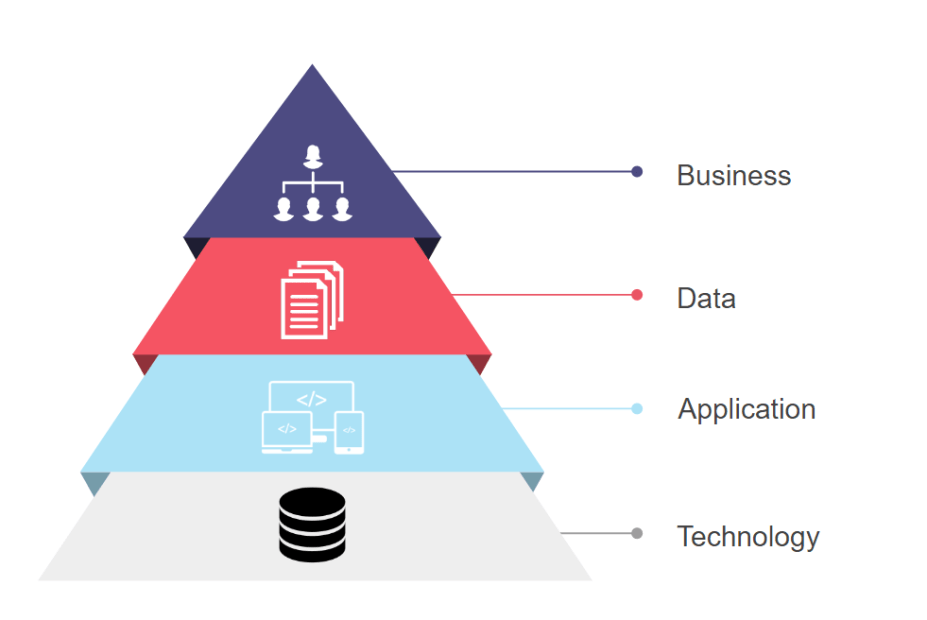Enterprise architecture (EA) is a strategic planning discipline used by organizations to align business objectives with IT strategy, processes, and infrastructure. It provides a holistic view of an organization’s key business processes and IT infrastructure. The primary goal of enterprise architecture is to ensure that an organization’s business strategy and IT investments are in alignment.
Understanding the Concept of Enterprise Architecture
Enterprise architecture serves as a blueprint that defines the structure and operation of an organization. This includes its information systems, information flows, processes, personnel, and operational tools. The purpose of EA is to determine how an organization can most effectively achieve its current and future objectives.
Components of Enterprise Architecture
The main components of EA include Business Architecture, Information Architecture, Application Architecture, and Technology Architecture. Business Architecture defines the business strategy, governance, organization, and key business processes. Information Architecture involves the analysis and organization of business data. Application Architecture deals with the interaction between different application systems, while Technology Architecture describes the hardware, software, and network infrastructure supporting the applications.
Benefits of Implementing Enterprise Architecture
Implementing EA brings several benefits to an organization. It ensures alignment between the business and IT, facilitating effective decision-making. It aids in risk management and helps to reduce complexity, redundancies, and inefficiencies. Moreover, it supports compliance with industry standards and regulations, providing a clear map of where sensitive data resides.
The Role of an Enterprise Architect
An enterprise architect is a leader who is responsible for developing and maintaining the enterprise architecture. They work closely with stakeholders, including business executives and IT professionals, to align IT strategy with business goals. Their role also includes managing risks and ensuring efficient use of resources.
FAQs:
What is the purpose of enterprise architecture?
The purpose of enterprise architecture is to create a unified IT environment across the firm or all of the firm’s business units, with tight symbiotic links to the business side of the organization and its strategy.
Who uses enterprise architecture?
Enterprise architecture is used by large businesses and organizations that have complex IT infrastructures. It is also used by government agencies and non-profit organizations to manage IT resources effectively.
What are the types of enterprise architecture?
There are several types of enterprise architecture frameworks including The Open Group Architecture Framework (TOGAF), Zachman International’s framework for enterprise architectures, and the Federal Enterprise Architecture (FEA).
How does enterprise architecture add value to a business?
Enterprise architecture adds value by aligning IT with business goals, reducing redundancies, improving efficiency, aiding in risk management, and supporting compliance with industry standards and regulations.
Is enterprise architecture a good career?
Yes, enterprise architecture can be a rewarding career. It offers the opportunity to work on strategic projects, influence business decisions, and it often comes with a high level of job satisfaction.
The Significance of Enterprise Architecture
In conclusion, enterprise architecture plays a crucial role in ensuring the alignment of business strategy with IT infrastructure. It provides a holistic view of an organization, enabling effective decision-making and efficient use of resources. As businesses continue to evolve in a rapidly changing technological landscape, the importance of having a robust enterprise architecture cannot be overstated.
